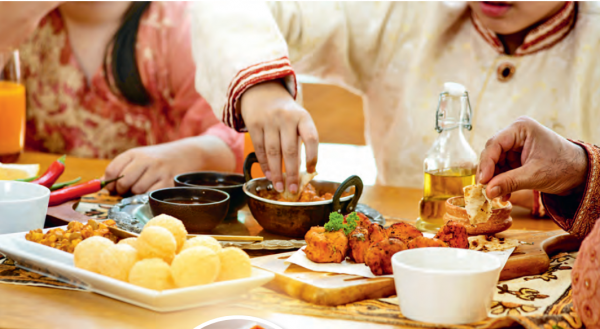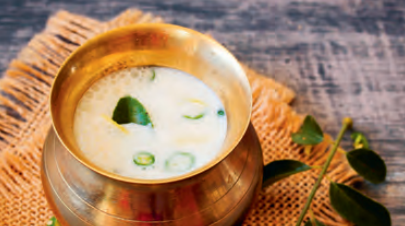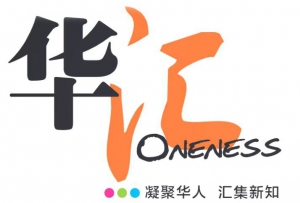为什么印度人这么吃?
右手进餐,餐后漱口;不吃牛,不用猪油,每周每月还禁食。
文│Sukanya Pushkarna
作者是印度妇女协会前会长
图│iStock

印度菜的多样性与印度的地理、宗教、种姓制度和气候密不可分。由于印度地广人多,很难对其饮食文化进行简单的概括。
左手吃饭是不尊重?
印度人大多用手进餐,因为人们认为每根手指都与人体的五大元素之一相连(拇指对应火元素、食指对应风、中指对应空、无名指对应地、小指对应水。),每根手指也各自代表不同的能量。用手进餐也提供全面的感官体验,包括见其物、闻其香气、感其温度和尝其味道。这就是为何印度人通常会在餐前餐后彻底洗手。用右手进餐是一种传统,而用左手吃饭被视为不尊重。多数印度人在用餐后还会习惯性地漱口。
Roti-prata在印度找不到?

小麦是北印度的主食谷物,克什米尔除外。小麦也是西部的古吉拉特和邦和拉贾斯坦邦的主要谷物。用小麦制成的扁圆面包就包括:烙饼(roti)、煎饼(paratha)、馕(naan)、麦饼(chapati)、香草全麦饼(thepla)和黄金脆饼(puri)。在新马流行的印度煎饼roti-prata是印度人和当地传统的独特融合,反而在印度不多见。
南印度的大多数邦都食用米,一般会用米和豆类制成煎饼、蛋糕、面条等,例如:卷饼(dosa)、薄饼(thosai)、蒸米糕(idli)、圆盘状蒸米粉(idyappam,新加坡叫putu mayam)、薄煎饼(appam)等。
一顿thali(套餐)有什么?

传统的印度餐包含苦、辣、甜、咸和酸等各种口味。主食是米饭或馕之类的小麦面包,以及一系列配菜,包括扁豆、无汁或带汁的蔬菜与一些肉和鱼。辅助调味品如辣椒酱、炸扁豆片(papadums)、一些酸奶(yogurt)来中和辛辣味道,最后是甜点,构成完整的印度餐。节日期间,印度人还会在一个大钢盘或银盘摆上多道食物,还有几碗搭配的菜肴,也有人会用香蕉叶当盘子,直接将食物放在上面。
印度人不用猪油?
用于烹饪的油因邦而异。南印度人用花生、椰子和芝麻油,一些邦主要用芥末油或菜籽油。许多印度人现在也用更容易买到的葵花油和葵花籽油。印度人一般不用猪油或其他动物脂肪替代油。
印度教信徒不吃牛肉?
尽管许多印度人是素食者,但超过60至65%的人口是荤食者。牛肉在印度教饮食中是不可接受的,因为牛被视为神圣的动物,但今天全球化的印度教信徒未必遵循这个传统。印度的穆斯林像各国的穆斯林一样,不吃猪肉。
素食包括乳制品?

在大多数沿海邦如孟加拉、喀拉拉、奥里萨、泰米尔纳德邦的饮食中,鱼是不可或缺的一部分。尽管如此,泰米尔纳德邦的婆罗门人通常是素食主义者,但是克什米尔或孟加拉的婆罗门人则一般不是。
印度的素食包括所有形式的乳制品,如干酪、酸奶、酪乳和黄油。每周或每月进行一次禁食在整个印度非常普遍,被视为一种健康的做法。许多印度的非素食者也会在一周的某个日子避免食用鱼和肉。
“咖喱”不是一道菜?
在印度,“咖喱”本身不是一道菜,而是一种烹饪方式,是不同香料的混合,如辣椒、芥末籽、豆蔻、莳萝籽、姜黄根粉等,以此调味烹煮出带汁的菜肴。常见的配方都有各自的名字,而不会简单地叫“咖喱”。倒是“玛莎拉”(Masala)一词更为常见,指的是混合香料,可以搭配鸡、鱼、羊和各色蔬菜烹煮。
在新马一带,南印度菜如印度卷饼、浓汤炖菜(sambar)、番茄蔬菜湯(rasam)、印度薄煎饼,搭配椰奶和糖或蔬菜炖肉或鱼等,深受当地印度人、华人和马来人喜爱。
印度出名的“潘奇佛兰”是什么?
印度人爱用各种种子和香料烹煮菜肴。北印度人用孜然籽调味,用香菜叶装饰,而南印度人用芥末籽、红辣椒和扁豆来调味,咖喱叶作为装饰,及大量用酸奶给菜肴增添强烈的酸味。东印度的孟加拉邦、比哈尔邦、奥里萨邦则爱用洋葱籽,并以“潘奇佛兰”(panch phoron,意即五种香料混合,由胡芦巴籽、黑种草籽、小茴香籽、黑芥末籽和茴香籽组成。)和芥末浆而闻名。古吉拉特邦在烹饪中加入糖或红糖以获得精致的甜咸风味。
印度美食有哪些?
世界各地的印度餐馆主要烹煮受莫卧儿*文化影响的北印度美食。
- 烤鸡(Tandoori chicken)
- 黄油鸡(Butter chicken)
- 奶酪牛油咖喱(Paneer makhani)
- 豆饼和炸面饼(Chhole bhature)
- 酸奶酱(Raita)
- 米粉布丁和果仁丸子(Vermicelli pudding and gulab jamun)甜点
- 各种面包,如馕和煎饼,深受非印度人的喜爱。
*莫卧儿王朝是突厥-蒙古血统的穆斯林王朝,从16世纪初到18世纪中期统治印度北部大部分地区。北印度美食融合莫卧儿穆斯林和印度传统烹饪文化。
Knowing Indian dining
Answers to queries you may have regarding Indian cuisine traditions.
Sukanya Pushkarna
The author is a former president of the Indian Women’s Association (IWA)
The diversity of Indian cuisine is inseparable from India’s geography, religion, caste system and climate. Given the size of the country, it is hard to generalise on its cuisine.
Is eating or serving with the left hand disrespectful?
Indians mostly eat with their fingers, as it is believed that each finger is connected to one of the five elements, and that it makes for a full sensory experience where they see the food, smell its aroma, feel its texture and temperature, and taste its flavour. It is customary to wash their hands thoroughly before and after a meal. It is also customary to eat with the right hand, as eating or serving others with the left is deemed disrespectful. Most Indians will also rinse their mouth with water after they have eaten.
Is roti prata not available in India?
Wheat is the staple grain in North India, apart from Kashmir. It is also a major staple of the western states of Gujarat and Rajasthan. Roti, paratha, naan, chapati, thepla and puri are some types of bread made with wheat. The roti prata popular in Southeast Asia is a unique blend of Indian and local traditions, and is not typically eaten in India.
Rice is eaten in most states, and we also find a variety of pancakes and cakes, noodles and so forth made of rice and lentils all over South India. Dosa/thosai, idli, idyappam, appam and so on are examples.
What’s in a thali meal?
A traditional Indian meal would include cooked rice or wheat in the form of roti, naan and so forth, and an assortment of side dishes including cooked lentils, vegetables cooked dry or with gravy, and some meat and fish. Condiments like pickles for added spice, fried lentil chips (papadums), some yogurt or buttermilk to wash down the spices and a small dessert are also integral to a wholesome meal. During festivals, Indians may still serve a multi-dish meal on a large steel or silver plate, with several bowls for accompanying dishes. In some parts, banana leaves are used as plates and the food is served directly onto it.
Is lard used in cooking?
The oil used for cooking also varies from state to state. South Indians use groundnut, coconut and sesame oil, while other states use mostly mustard or rapeseed oil. Many Indians now use canola and sunflower oil as they are easily available. They almost never use lard or other animal fat as a cooking medium.
Is beef not acceptable?
While many Indians are vegetarian, more than 60% to 65% of the population consume meat, fish and eggs as a part of their diet. Beef is not an acceptable part of a Hindu meal as the cow is considered sacred, but some Hindus today do not follow this dictate. Muslims in India, like elsewhere in the world, do not typically eat pork. While these religious sentiments are commonly respected, people of all faiths eat the cuisine of their own region.
Does a vegetarian diet include dairy products?
Most coastal states like Bengal, Kerala, Orissa and Tamil Nadu have fish as an integral part of the diet. Brahmins in some states like Tamil Nadu are typically vegetarian, while those in Kashmir and Bengal are typically not.
The Indian vegetarian diet includes all forms of dairy products, including cottage cheese, yogurt, buttermilk and butter. Fasting once a week or once a month is very prevalent throughout India and considered a healthy practice. Many non-vegetarians avoid meat and fish on certain days of the week.






